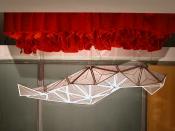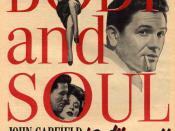Mary Ann Doane discusses the use of voice in cinematic presentation in this article. She determines the acceptance of voice by the viewer by defining the phantasmatic body of a film. This body is the replica created by the technology itself. It is the body of the character and of the film. Voices within a cinematic presentation are assumed by the audience to come from this body, even if they are off-screen voices.
The acceptance of this off-screen voice by the audience is dependent on an understanding of space within the cinema itself. It relies on an understanding that the frame of the visual image does not limit the aural space. Even the physical confines of the theater itself are not the limit of the diegesis or aural telling of the story. Though the visual story is limited, the audience accepts auditory input from outside the frame. The audience connects this input to the phantasmatic body in and of the film.
"The traditional use of voice-off constitutes a denial of the frame as a limit and an affirmation of the unity and homogeneity of the depicted space" (Doane, 1980)Doane defines three distinct spaces that are put into play for cinematic action. These are the space of the diegesis, the visible space, and the acoustical space. The diegesis is the space constructed by the film. It is physically limitless encompassing all that is portrayed within the film, including all visual and auditory cues. The visible space of the film is that which is contained in the viewing frame - the screen itself. This space is recognized as visually limited, although auditory cues can come from outside the frame. The acoustical space is the space within which the sounds from the movie can be heard. This space is often defined within the...


